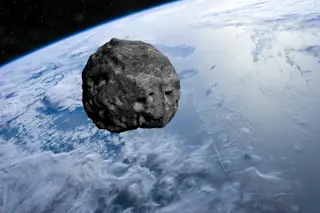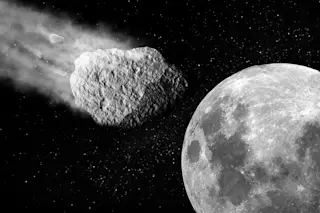I got a call yesterday from a producer at Fox News, who asked me if I wanted to comment on a proposal by two California physicists to build a "Death Star" that would protect our planet from incoming asteroids. The answer to a question like that is inevitably going to be "Of course!" so I appeared on Fox News earlier this morning to discuss the idea. (View the story here.)
Conceptual illustration shows how DE-STAR could vaporize an asteroid and power a space probe at the same time...if we could ever build such a thing. (Credit: Philip M. Lubin) The proposal, which was announced by press release and press conference, comes from cosmologist Philip Lubin of the University of California at Santa Barbara and engineer Gary Hughes of California Polytechnic State University. Calling it a Death Star immediately makes the idea sound both sexy and goofy. The researchers use the ...













